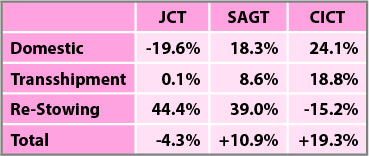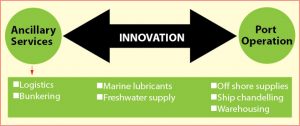Originally appeared on The Morning.
By Anuka Ratnayake and Aaditha Edirisinghe
On 13 January 2022, the Station Masters’ Union launched a 24-hour token strike cancelling over 200 scheduled trips. As a result, commuters heading back home from Colombo, long distance travellers, tourists (both local and foreign) were all inconvenienced and left stranded in stations partway through their journey. Angry commuters attacked the train bound to Batticaloa when it passed the Kekirawa Station. This public outrage at the services provided by Sri Lanka Railway (SLR) is nothing new. However, little has been done to reform or restructure amidst public disappointment and escalating losses.
Why should the Railway be reformed?
Operating as a Government institution under the Ministry of Transport, SLR is the country’s primary alternative mode of public transport to the often congested road network. Underpricing of railway fares along with systemic issues including mismanagement and poor governance have led to recurring annual losses. Despite budgetary support, the railway has recorded an accumulated loss of Rs. 46.7 billion in the years 2015-20.
As with many transportation networks globally, the impact of Covid-19 has made SLR’s financial position increasingly precarious; with revenues down, losses amounted to over Rs.10 billion in 2020 alone. The widening chasm between the revenue raised and expenditure incurred, stood at a staggering Rs. 22 billion in 2018, as per official records. This has led to the dependence on Government bailouts. The Treasury spent a grand total of Rs. 48.7 billion in 2020, of which around Rs. 14 billion was for recurrent expenditure such as salaries, subsidies and grants.
Sri Lanka Railway has an exceedingly large workforce with very active trade unions and an extensive bureaucracy. According to the official statistics of 2019, SLR has 14,207 employees. The total personal emoluments incurred for the same year was Rs. 9.8 billion, which was up by Rs. 809 million compared to 2018.
Due to the overstaffing issue, work duplication is often seen at SLR and is a serious issue affecting efficiency. Union actions are a burden on the operations of SLR, as observed during the last week of December 2021 and on 13 January 2022.
In an interview conducted in January 2022, the Station Masters’ Association Chairman Sumedha Someratne claimed that as a result of the strikes in December, SLR incurred a loss as high as Rs. 20 million per day although the Railway General Manager quoted a much lower figure.
A major reason for SLR’s budgetary reliance is the lack of cost reflective pricing. As of now, for a trip between 51-100 km, the fare per kilometre is around Rs. 3.30 for first class seats and Rs. 1 for third class seats. This underpricing has led to a reduction in the availability of funds to cover operational costs, resulting in the lack of finance for maintenance and repairs; by 2017, 65% of SLR’s locomotives were over 30 years old.
The Urban Transport Master Plan 2014 identified several irregularities of the condition of the railway. A few noteworthy issues were the malfunctionings in the signalling system along with the deformation of rails and irregularities in alignment, which caused delays and sudden cancellation of trains. This poses a threat to passenger safety and is increasingly dangerous during inclement weather conditions.
Reform recommendations
Given that Sri Lanka is facing an economic crisis, the treasury cannot afford to shield SLR from the adverse repercussions of its inefficient operations. Immediate reforms are needed to get SLR back on track.
Since most of SLR’s issues stem from its inability to raise sufficient revenues, the implementation of a cost-reflective fare structure should be prioritised. However, standing in the way of such price reform are the cheap fares of public bus service, the primary substitute to rail transport.
Therefore, for the price revision to be viable SLR should look into improving the quality of service to justify higher prices while reducing costs to be more competitive.
Furthermore, to offset some costs SLR can focus on the profitable use of its vast asset base, such as its 13,000 acres of land which can be capitalised for this purpose. In 2017, it was reported that nearly 15% of land owned by SLR was leased to 6,400 users. Yet it has been unable to collect Rs. 1.46 billion in lease revenue from the users of the land owned by the department. Better management of real estate would bring in massive revenues to the Railway Department, which can be used to finance repairs and maintenance.
Moreover, the Railway Department can focus on improving freight transportation, a lucrative and profitable source of revenue generation. According to the Asian Development Bank, by 2017, the freight transportation service market share of Sri Lanka Railway had eroded to less than 1%. The lack of necessary transportation and containerisation equipment limits the freight business to goods such as cement and petroleum. In the interest of expanding the freight service with the available resources; tracks which are reserved for passenger transportation during the daytime can be utilised under a night schedule.
Furthermore, portions of SLR’s underutilised land can be used profitably for freight-related logistics services which will also bring in much-needed revenue to the loss-making institution.
To bridge the prevailing investment gap at SLR, public private partnerships (PPPs) should be encouraged for operations and maintenance. A major bottleneck in SLR’s ability to deliver a consistent service is the outdated and malfunctioning infrastructure it owns, such as signalling and tracks. Investments in this respect will allow SLR to provide the public a consistent service while accumulating a sustained influx of cash.
Colossal losses of state-owned institutions such as the Sri Lanka Railway is a burden on the state coffers, and ultimately the taxpayer. The Government’s increasing reliance on debt to keep such institutions afloat is compromising the economic future of Sri Lanka. Thus it is the need of the hour to begin reforming and restructuring potential cash cows such as Sri Lanka Railway. If reformed, Sri Lanka Railway would undoubtedly be a pillar of Sri Lanka’s transport infrastructure, contributing to the overall productivity of the economy.
The opinions expressed are the author’s own views. They may not necessarily reflect the views of the Advocata Institute, or anyone affiliated with the institute.



